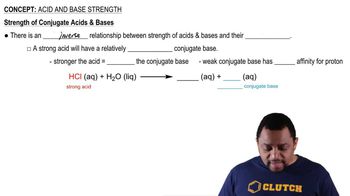Textbook Question
Identify the Brønsted–Lowry acid–base pairs in each of the following equations:
b. NH4+(aq) + H2O(l) ⇄ NH3(aq) + H3O+(aq)
723
views
 Verified step by step guidance
Verified step by step guidance Verified video answer for a similar problem:
Verified video answer for a similar problem:



 3:17m
3:17mMaster Bronsted Lowry Acids & Bases Concept 1 with a bite sized video explanation from Jules
Start learning